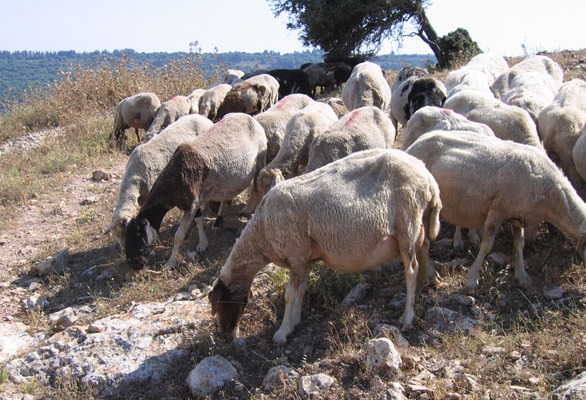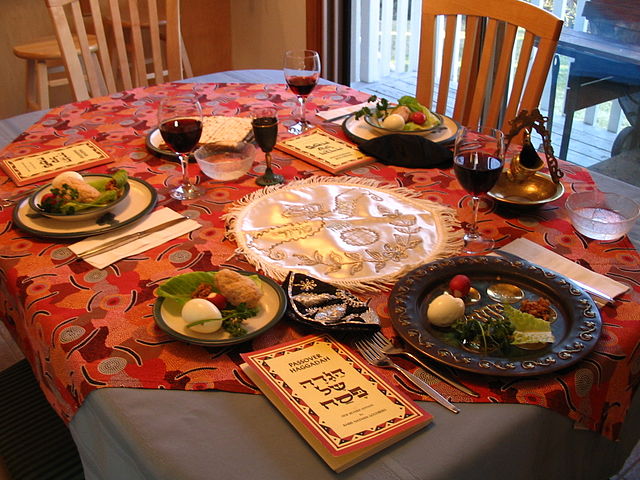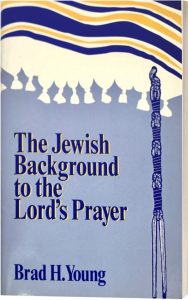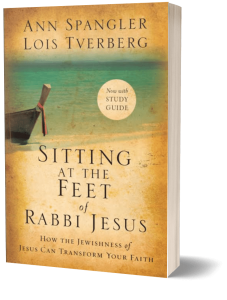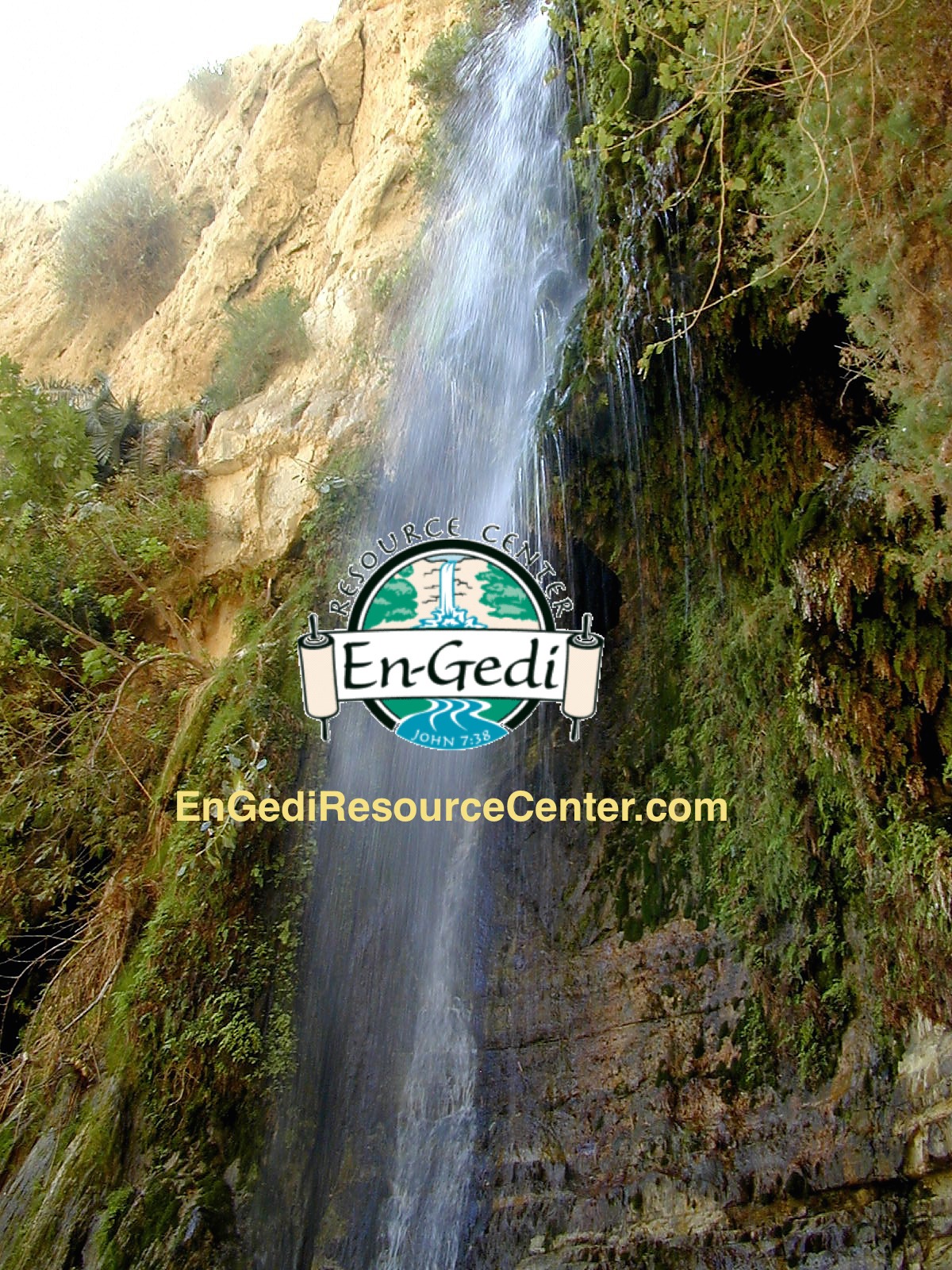Listening to the Language of the Bible
Additional Article Resources
Listed below are additional references and sources for related information. Many of the chapters of the book are based on longer articles available at this website. Titles of those articles are marked with an asterisk (*). Hyperlinks to the resources are also provided where possible.
I. Hebraic Insights That Deepen Our Thinking
Listen and Obey
How to Love the Lord *
Jesus’ Surprising Answer *
The Shema Prayer *
K. T. Aitken, “Shema,” New International Dictionary of Old Testament Theology & Exegesis (Grand Rapids, MI: Zondervan, 1997), Electronic Text, Oaktree Software, Inc.
J. Tigay, “Excursus 10: The Shema,” JPS Torah Commentary on Deuteronomy (New York: Jewish Publication Society, 1996), pp. 438–441.
Knowledge of God
Listening Through Jesus’ Ears *
True Knowledge of the Lord *
M. Wilson, “The Hebrew View of Knowledge,” Our Father Abraham (Grand Rapids, MI: Eerdmans, 1989), pp. 287–289.
Fear, Awe, and Reverence
“Does God Want Us to Fear Him?” *
A. Guttmacher, “Fear of God,” Jewish Encyclopedia (Funk and Wagnalls, 1905-1906), in public domain at www.jewishencyclopedia.com.
D. A. Pryor, “Fear of YHWH and Hebrew Spirituality,” lecture, Center for Judaic-Christian Studies, www.jcstudies.com.
C. Pearl, Theology in Rabbinic Stories (Peabody, MS: Hendrickson, 1997), p. 116.
Law and Instruction
Torah – Law, Instruction *
D. A. Pryor, “Jesus, Christians and the Law,” audio tape series, www.jcstudies.com.
M. Wilson, Our Father Abraham (Grand Rapids, MI: Eerdmans, 1989), pp. 296–297.
A Judge as a Savior?
A Judge as a Savior? *
D. Bivin, Understanding the Difficult Words of Jesus (Shippensburg, PA: Destiny Image, 1994), pp. 60–62.
R. Shultz, “Din” (Judge), New International Dictionary of Old Testament Theology & Exegesis (Grand Rapids, MI: Zondervan, 1997), Electronic Text, Oaktree Software, Inc.
How Is Your Peace?
Shalom *
Eating at the Lord’s Table *
W. L. Walker, “Peace,” International Standard Bible Encyclopedia (Grand Rapids, MI: Eerdmans, 1915), www.studylight.org/enc/isb/.
B. A. Levine, “The Sacred Gift of Greeting,” JPS Torah Commentary on Leviticus (New York: Jewish Publication Society, 1989) pp. 42–43.
Remembering Sins
Does God Forget Sin? *
D. Ward, The Biblical Concept of Remembrance, Grace and Knowledge, Issue 12, p.2.
Salvation in This Life
Salvation in This Life *
Fear and Trembling? *
M. Wilson, “Salvation: Escape or Involvement,” Our Father Abraham (Grand Rapids, MI: Eerdmans, 1989), pp. 178–182.
II. Lessons for Our Lives
Work and Worship
Avad — To Serve *
Who Are You Going to Work For? *
E. Carpenter, “Avad,” New International Dictionary of Old Testament Theology & Exegesis (Grand Rapids, MI: Zondervan, 1997), Electronic Text, Oaktree Software, Inc.
Faith and Faithfulness
Do You Have the Faith of Abraham? *
D.A. Pryor, “Consider Abraham,” article at www.bridgesforpeace.com.
M. Wilson, Our Father Abraham (Grand Rapids, MI: Eerdmans, 1989), pp. 182–185.
The Evil Tongue
Taming the Tongue *
Living Out Jesus’ Words on Judging *
The Power of Positive Speaking, Malka Drucker
J. Telushkin, Words that Hurt, Words that Heal (New York: William Morrow & Co., 1996).
Idols in the Land
Idols in the Land *
Are We Worshipping Junk Gods?, Jim Gerrish
N. Sarna, Understanding Genesis (New York: Shocken Books, 1966), pp. 16–18.
— Exploring Exodus, (New York: Shocken Books 1996), pp. 209, 219.
Giving of His Wisdom
The Hebrew Concept of Wisdom *
M. Wilson, Our Father Abraham (Grand Rapids, MI: Eerdmans, 1989), pp. 282–287.
Having a “Good Eye”
Jesus’ Strange Words About a Single Eye *
D. Bivin, Understanding the Difficult Words of Jesus, (Shippensburg, PA: Destiny Image, 1994), pp. 104–105.
R. S. Notley, “If Your Eye Be Single,” www.jerusalemperspective.com.(Premium Content membership required.)
Loving God With All Your Life
Nephesh — Soul, Life *
How to Love the Lord *
Story about Rabbi Akiva from the Babylonian Talmud, Brachot 61a
H. Kushner, Etz Hayim Torah and Commentary (New York: Jewish Publication Society, 2001), p. 1025.
III. Discovering the Bible’s Rich Imagery
Living Water Flowing!
Living Water *
Living Water Flowing! *
R. VanderLaan, Faith Lessons Volume 3 Leader’s Guide (Grand Rapids, MI: Zondervan, 1999), p. 175–195.
Letting Our Tassels Show
Letting Our Tassels Show *
J. Milgrom, “Excursus 38: Tassels (Tsitsit),” JPS Torah Commentary on Numbers (New York: Jewish Publication Society, 1990), pp. 410–414.
The Imagery of Leaven
The Imagery of Leaven *
A Little Leaven *
N. Sarna, Exploring Exodus (New York: Shocken Books, 1996), pp. 90–91.
The Refreshment of Dew
The Refreshment of Dew *
A. H. Joy, “Dew,” International Standard Bible Encyclopedia, (Grand Rapids, MI: Eerdmans, 1915) www.studylight.org/enc/isb/.
R. H. Isaacs, “Rain in Jewish Tradition,” www.jewishnaturecenter.org.
A Year of Jubilee
The Gospel as a Year of Jubilee *
A. Rothkoff, “Sabbatical Year and Jubilee,” Encyclopedia Judaica CD-ROM, Judaica Multimedia, Version 1.0, 1997.
The Powerful Imagery of Blood
The Powerful Imagery of Blood *
W. G. Clippinger, “Blood,” International Standard Bible Encyclopedia (Grand Rapids, MI: Eerdmans, 1915), www.studylight.org/enc/isb/.
K. Kohler, “Covenant,” Jewish Encyclopedia (Funk and Wagnalls, 1905–1906), public domain at www.jewishencyclopedia.com.
Knowing Us by Our Fruit
Where Is the Juice? *
N. Hareuveni, Desert and Shepherd in Our Biblical Heritage (Tel Aviv: Neot Kedumim, 1991) pp. 67–72.
(Thanks also to R. VanderLaan who shared the Arara with us originally.)
Laying Down the Bow
The Flood’s Deeper Message of Mercy *
The Good News Starts in Genesis *
The Slippery Slope *
Laying Down the Bow *
N. Sarna, JPS Torah Commentary: Genesis (New York: Jewish Publication Society, 1989), pp. 62–63.
IV. Words in Living Color
In the Image of God
In His Image *
R. Buth, “Your Money or Your Life,” www.jerusalemperspective.com.(Premium Content membership required.)
A. Berlin and M. Brettler, The Jewish Study Bible (New York: Oxford University Press, 2004), p 14.
N. Sarna, Understanding Genesis (New York: Shocken Books, 1966), pp. 14–16.
J. Telushkin, “The Little Indecencies that Reveal Character,” The Jewish Book of Values (New York: Bell Tower, 2000), pp. 116–117.
Don’t Be a Stench!
The Fragrance of Christ *
Ba’ash – Stench *
P. Jenson, “Ba’ash,” New International Dictionary of Old Testament Theology & Exegesis (Grand Rapids, MI: Zondervan, 1997), Electronic Text, Oaktree Software, Inc.
With All Your Strength
Based on Me’odekah * Contributed by Mary Okkema.
How to Love the Lord *
Heart and Mind
How to Love the Lord *
Giving of His Wisdom *
M. Wilson, Our Father Abraham (Grand Rapids, MI: Eerdmans, 1989), pp. 287–312.
Beginnings, Almost
Not Quite the Beginning *
H. Kushner, Etz Hayim Torah and Commentary (New York: Jewish Publication Society, 2001), p. 3.
Looking for the Source
Makor — Source * by Mary Okkema.
Wings of Protection
G. Stratton-Porter, “Wings,” International Standard Bible Encyclopedia, (Grand Rapids, MI: Eerdmans, 1915) www.studylight.org/enc/isb/.
S. Singh, Tapas – Suffering – Wisdom of the Sadhu (The Bruderhof Foundation, Inc., 2003), www.bruderhof.com. Used with permission.
V. The Importance of Family
Why All the “Begats”?
All in the Family! *
L. Rabinowitz, “Family,” Encyclopedia Judaica CD-ROM, Judaica Multimedia, Version 1.0, 1997.
The Firstborn of the Father
First Things First *
N. Sarna, Exploring Exodus (New York: Shocken Books, 1996), pp. 93–94.
A Son Like His Father
Ben — Son *
W. R. Betteridge, “Son, Sons” International Standard Bible Encyclopedia (Grand Rapids, MI: Eerdmans, 1915), www.studylight.org/enc/isb/.
D. Bivin, “First Century Discipleship,” www.jerusalemperspective.com.
My Brother’s Keeper
My Brother’s Keeper *
N. Sarna, Understanding Genesis (New York: Shocken Books, 1966), pp. 30–31.
R. Alter, The Art of Biblical Narrative, (New York: Basic Books, 1981 ), pp. 88–113.
Too Many Wives
Based on Hagar’s Plight * Contributed by Bruce Okkema.
In the House of the Lord
Based on Beit – House * Contributed by Bruce Okkema.
Son of David, Son of God *
K. Barker, The New International Version Study Bible, 10th Anniversary Edition (Grand Rapids, MI: Zondervan, 1995).
VI. Insights That Enrich Our Prayer Life
Blessing the Lord
The Richness of Jewish Prayer *
H. Danby, trans., Tractate Berakoth, Mishnah (New York: Oxford University Press, 1933), pp. 2–10.
B. Young, Jesus the Jewish Theologian (Peabody, MS: Hendrickson, 1995), pp. 119–125.
The Direction of Your Heart
Kavanah — Intention *
B. Young, Jesus the Jewish Theologian (Peabody, MS: Hendrickson, 1995), pp. 191–193.
Praying With Persistence
Heroic Chutzpah *
Praying With Chutzpah *
B. Young, “The Contemptible Friend and the Corrupt Judge,” The Parables (Peabody, MS: Hendrickson, 1998), pp. 41–65.
Our Father
Our Father *
B. Young, “The Lord’s Prayer (2): Our Father Who Art In Heaven,” www.jerusalemperspective.com
S. Safrai, “Jesus and the Hasidim,” www.jerusalemperspective.com. (Premium Content membership required.)
R. Lindsey, Jesus, Rabbi and Lord (Oak Creek, WI: Cornerstone 1990), p. 29.
To Hallow the Name
What Does It Mean to Hallow God’s Name? *
J. Telushkin, “You Shall Not Carry God’s Name in Vain: An Unforgivable Sin,” The Jewish Book of Values (New York: Bell Tower, 2000), p. 197.
H. H. Ben-Sasson, “Kiddush Ha-Shem and Hillul HaShem,” Encyclopedia Judaica CD-ROM, Judaica Multimedia, Version 1.0, 1997.
Thy Kingdom Come
The Kingdom of Heaven is Good News! *
R. Lindsey, “The Kingdom of Heaven: God’s Power Among Believers,” www.jerusalemperspective.com. (Premium Content membership required.)
Our Daily Bread
Lechem — Bread *
Give Us Our Daily Bread *
J. Bivin, “Don’t Throw Away That Piece of Bread,” www.jerusalemperspective.com..
“Bread,” by editorial staff, Encyclopedia Judaica CD-ROM, Judaica Multimedia, Version 1.0, 1997.
Keep Us From Evil
Keep Us From Evil *
B. Young, “The Lord’s Prayer (9): Lead Us Not Into Temptation,” www.jerusalemperspective.com.. (Premium Content membership required.)
R. Buth, “Deliver Us From Evil,” www.jerusalemperspective.com..
Amen and Amen!
“Amen and Amen! *
J. Millar, “Amen,” International Standard Bible Encyclopedia, (Grand Rapids, MI: Eerdmans, 1915), www.studylight.org/enc/isb/.
D. Bivin, “Amen: Introduction or Response?” & Jesus’ Use of Amen, www.jerusalemperspective.com.. (Premium Content membership required.)
VII. Ideas About the Messiah
What Does “Christ” Mean?
What Does the Name Jesus “Christ” Mean? *
Son of David, Son of God *
J. Chrichton, “Messiah,” International Standard Bible Encyclopedia, (Grand Rapids, MI: Eerdmans, 1915), www.studylight.org/enc/isb/.
What’s the Good News?
N.T. Wright, “Paul’s Gospel and Caesar’s Empire,” www.ctinquiry.org/publications/wright.htm/
S.T. Hague, “Besorah,” New International Dictionary of Old Testament Theology & Exegesis (Grand Rapids, MI: Zondervan, 1997), Electronic Text, Oaktree Software, Inc.
God’s Kind of King
A Rabbi and a King? *
N. Scherman, The Book of Ruth (New York: Mesorah, 1989), pp. xxxi–xxxiii.
A Prophet Like Moses
Bread From Heaven *
A Prophet Greater Than Moses *
D. Bivin, “’Prophet’ as a Messianic Title,” www.jerusalemperspective.com..(Premium Content membership required.)
The Afflicted King
The Afflicted King *
W.J. Dumbrell, “Ani — Poor, Humble,” New International Dictionary of Old Testament Theology & Exegesis (Grand Rapids, MI: Zondervan, 1997), Electronic Text, Oaktree Software, Inc.
Our Redeemer
Redemption at Passover *
The Bride and the Lamb *
D. Daube, The New Testament and Rabbinic Judaism (Peabody, MS: Hendrickson, 1998), p. 268–284.
God With Us
Our Final Dwelling *
God With Us *
N. Sarna, Exploring Exodus (New York: Shocken Books, 1996), p. 204.
VIII. The Powerful Words of Jesus
The Great Shepherd
Jesus’ Habit of Hinting *
D. Bivin, “He Who Does Not Gather With Me Scatters — Luke 11:23,” unpublished handout from “At the Feet of Jesus” Workshop, March 20–24, 2000.
The Son of Man
Why Did Jesus Call Himself the ‘Son of Man’? *
Son of Man *
B. Young, Jesus the Jewish Theologian (Peabody, MS: Hendrickson, 2001), pp. 243–252.
R. Buth, “Jesus’ Most Important Title,” www.jerusalemperspective.com.. (Premium Content membership required.)
Raise Up Many Disciples
Raise Up Many Disciples *
D. Bivin, “First Century Discipleship,” www.jerusalemperspective.com..
S. Safrai, “Master and Disciple,” www.jerusalemperspective.com.. (Premium Content membership required.)
D. A. Pryor, “Walk After Me,” www.jerusalemperspective.com.. (Premium Content membership required.)
Loving God and Neighbor
Loving Your Neighbor, Who Is Like You *
Jesus’ Surprising Answers *
R. S. Notley, “Jesus’ Jewish Command to Love,” www.jerusalemperspective.com..(Premium Content membership required.)
With the Measure You Use
What Did Jesus Mean by “Do Not Judge”? *
Living Out Jesus’ Words on Judging *
Parable from Babylonian Talmud, Shabbat 127b.
J. Telushkin, “Find Excuses for Behavior That Seems Unkind,” The Jewish Book of Values (New York: Bell Tower, 2000), pp. 34–36.
L. Tverberg, “What Did Jesus Mean by ‘Do Not Judge’?” www.jerusalemperspective.com.. (Premium Content membership required.)
Light and Heavy
Jesus’ Rabbinic Teaching Style *
B. Young, The Parables (Peabody, MS: Hendrickson, 1998), p. 42.
D. Bivin, “Principles of Rabbinic Interpretation: kal va-homer (Part 2),” www.jerusalemperspective.com. (Premium Content membership required.)
A Jot or a Tittle
Yod — One Very Significant Letter *
Rabbinic parable from Exodus Rabba 6:1, quoted by B. Young in Jesus the Jewish Theologian (Peabody, MS: Hendrickson, 1995), p. 267.
The Time of Your Visitation
T. F. Williams, “Paqad,” New International Dictionary of Old Testament Theology & Exegesis (Grand Rapids, MI: Zondervan, 1997), Electronic Text, Oaktree Software, Inc.
The Kingdom Breaks Forth
The Kingdom Breaks Forth *
B. Young, Jesus the Jewish Theologian (Peabody, MS: Hendrickson, 2001), pp. 49–67.
R. Lindsey, “The Kingdom of Heaven: God’s Power Among Believers,” www.jerusalemperspective.com.

